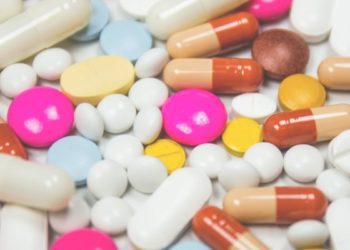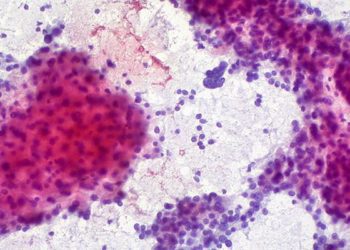Cow’s milk consumption linked to increased vitamin D, decreased iron in early childhood
Image: CC
1. Increased milk consumption was correlated with higher Vitamin D levels, but also with lower iron levels in children aged 2 to 5 years.
2. Two cups of cow’s milk per day was found to be sufficient to maintain vitamin D levels > 75nmol/L, with minimal effect on iron stores.
3. Children drinking cow’s milk from a bottle did not have an increase in vitamin D levels, but experienced a greater loss of iron stores.
Primer: Iron is a key component of hemoglobin and myoglobin, the oxygen carrier proteins of the red blood cell. Although much of the body’s iron is recycled and reused, dietary iron is critical for the maintenance of iron balance, particularly in children, because of their increased growth and metabolic needs. In the United States, approximately 2-3% of toddlers (1- to 3-years-old) have anemia due to iron deficiency, manifested by symptoms of fatigue and irritability, and linked to negative neurodevelopmental outcomes. Most iron deficiency in childhood is due to insufficient dietary intake, and has been linked to the introduction of cow’s milk (which is known to deplete iron stores) before 12 months of age, as well as bottle drinking of milk. It is thought that children may drink milk at the expense of eating other more iron-rich foods. Cow’s milk is also believed to directly inhibit iron absorption, though the precise mechanisms aren’t yet clear.
Vitamin D is a nutrient that plays an essential role in the maintenance of bone health and in calcium absorption. It is particularly important in early childhood when increased growth and remodeling of bone takes place. Approximately 10% of vitamin D is derived form dietary sources. Severe vitamin D deficiency results in rickets and bone deformities, but even mild vitamin D deficiency is linked to poorer calcium absorption, lower bone mineral density, immunologic conditions, as well as metabolic derangements such as diabetes. In the United States, approximately 15% of children are vitamin D-deficient. In light of this high prevalence of vitamin D deficiency, many foods are supplemented with vitamin D, especially cow’s milk.
Cow’s milk consumption is therefore correlated with both iron deficiency and vitamin D repletion in childhood, and there are few clear guidelines about the ideal quantity of milk a child should consume. This study quantifies the relationship between cow’s milk consumption and stores of vitamin D and iron in an effort to establish a guideline for milk consumption that preserves iron stores while increasing vitamin D.
Background reading:
1. Up To Date: Vitamin D deficiency in children and adolescents.
2. Up To Date: Iron deficiency in infants and young children.
This [observational] study evaluated 1311 children aged 2 to 5. Data were collected by interview with the parents, including questions such as the child’s age, gender, cow’s milk consumption (number of 250mL cups of milk per day), vitamin D or iron supplementation, and minutes of outdoor free play. These variables were correlated with BMI and serum levels of 25-hydroxyvitamin D and ferritin.
Increased consumption of cow’s milk was associated with increased vitamin D levels (p < 0.0001) and decreased serum ferritin (p = 0.0001). Lighter skin pigmentation and increased outdoor play during the summer session were associated with higher vitamin D levels, while the winter session was associated with increased iron levels. Bottle use was significantly correlated with even further decreased iron stores, though milk consumption in this setting may have been under-reported.
In sum: Cow’s milk consumption is associated with increased stores of vitamin D and decreased iron stores in young children. Two cups of milk per day (500mL) of cow’s milk was associated with vitamin D levels above the recommended 75 nmol/L without significantly compromising iron levels. However, in children with increased skin pigment, 2 cups of cow’s milk was insufficient to maintain vitamin D levels, suggesting additional supplementation may be necessary, particularly in winter months. Of note, this study is somewhat limited in that it relies heavily on parental self-report, introducing a potential recall bias. A definitive causal link, as with any observational study, cannot be concluded.
Click to read the study in Pediatrics
By [EH] and [DB]
© 2012 2minutemedicine.com. All rights reserved. No works may be reproduced without written consent from 2minutemedicine.com. Disclaimer: We present factual information directly from peer reviewed medical journals. No post should be construed as medical advice and is not intended as such by the authors or by 2minutemedicine.com. PLEASE SEE A HEALTHCARE PROVIDER IN YOUR AREA IF YOU SEEK MEDICAL ADVICE OF ANY SORT.




